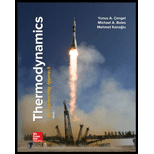
Thermodynamics: An Engineering Approach ( 9th International Edition ) ISBN:9781260092684
9th Edition
ISBN: 9781260048667
Author: Yunus A. Cengel Dr.; Michael A. Boles
Publisher: McGraw-Hill Education
expand_more
expand_more
format_list_bulleted
Textbook Question
Chapter 9.12, Problem 132P
Air at 7°C enters a turbojet engine at a rate of 16 kg/s and at a velocity of 220 m/s (relative to the engine). Air is heated in the combustion chamber at a rate 15,000 kJ/s, and it leaves the engine at 427°C. Determine the thrust produced by this turbojet engine. (Hint: Choose the entire engine as your control volume.)
Expert Solution & Answer
Want to see the full answer?
Check out a sample textbook solution
Students have asked these similar questions
1
Water at 15°C ( p = 999.1 kg/m³ and µ = 1.138 × 10¯¯³kg/m.s) is flowing
steadily in a 34-m-long and 6-cm-diameter horizontal pipe made of stainless
steel at a rate of 10 L/s. Determine the pressure drop, the head loss, and the
pumping power requirement to overcome this pressure drop. The roughness
of stainless steel is 0.002 mm.
eBook
Hint
10 L/s
6 cm
L
The pressure drop is
The head loss is
kPa.
|m. (Round the final answer to two decimal places.)
The pumping power requirement is
three decimal places.)
kW. (Round the final answer to
3
eBook
Hint
Air enters an 15-m-long section of a rectangular duct of cross section
15 cm x 20 cm made of commercial steel at 1 atm and 35°C at an average
speed of 5 m/s. Disregarding the entrance effects, determine the fan power
needed to overcome the pressure losses in this section of the duct. The
properties of air at 1 atm and 35°C are p = 1.145 kg/m³,
µ = 1.895 × 10−5 kg/m·s, and v = 1.655 × 10¯5m²/s. The roughness of
commercial steel surfaces is = 0.000045 m. (Round the final answer to
three decimal places.)
L
15 cm
Air
20 cm
5 m/s
The fan power needed to overcome the pressure losses is
4.0695 W.
12)
A particle is moving along a circular path having a radius of
6 in. such that its position as a function of time is given by
0 = sin 3t, where 0 is in radians, the argument for the sine are
in radians, and t is in seconds. Determine the acceleration of
the particle at 0 = 30°. The particle starts from rest at
0 = 0°.
Chapter 9 Solutions
Thermodynamics: An Engineering Approach ( 9th International Edition ) ISBN:9781260092684
Ch. 9.12 - What are the air-standard assumptions?Ch. 9.12 - What is the difference between air-standard...Ch. 9.12 - Prob. 3PCh. 9.12 - How does the thermal efficiency of an ideal cycle,...Ch. 9.12 - How are the combustion and exhaust processes...Ch. 9.12 - What does the area enclosed by the cycle represent...Ch. 9.12 - Prob. 7PCh. 9.12 - Can the mean effective pressure of an automobile...Ch. 9.12 - What is the difference between spark-ignition and...Ch. 9.12 - Prob. 10P
Ch. 9.12 - Prob. 11PCh. 9.12 - Can any ideal gas power cycle have a thermal...Ch. 9.12 - Prob. 13PCh. 9.12 - Prob. 14PCh. 9.12 - Prob. 15PCh. 9.12 - Prob. 16PCh. 9.12 - Prob. 17PCh. 9.12 - Prob. 18PCh. 9.12 - Prob. 19PCh. 9.12 - Repeat Prob. 919 using helium as the working...Ch. 9.12 - The thermal energy reservoirs of an ideal gas...Ch. 9.12 - Consider a Carnot cycle executed in a closed...Ch. 9.12 - Consider a Carnot cycle executed in a closed...Ch. 9.12 - What four processes make up the ideal Otto cycle?Ch. 9.12 - Are the processes that make up the Otto cycle...Ch. 9.12 - How do the efficiencies of the ideal Otto cycle...Ch. 9.12 - How does the thermal efficiency of an ideal Otto...Ch. 9.12 - Why are high compression ratios not used in...Ch. 9.12 - An ideal Otto cycle with a specified compression...Ch. 9.12 - Prob. 30PCh. 9.12 - Prob. 31PCh. 9.12 - Determine the mean effective pressure of an ideal...Ch. 9.12 - Reconsider Prob. 932E. Determine the rate of heat...Ch. 9.12 - An ideal Otto cycle has a compression ratio of 8....Ch. 9.12 - Prob. 36PCh. 9.12 - A spark-ignition engine has a compression ratio of...Ch. 9.12 - An ideal Otto cycle has a compression ratio of 7....Ch. 9.12 - Prob. 39PCh. 9.12 - An ideal Otto cycle with air as the working fluid...Ch. 9.12 - Repeat Prob. 940E using argon as the working...Ch. 9.12 - Someone has suggested that the air-standard Otto...Ch. 9.12 - Repeat Prob. 942 when isentropic processes are...Ch. 9.12 - Prob. 44PCh. 9.12 - Prob. 45PCh. 9.12 - Prob. 46PCh. 9.12 - Prob. 47PCh. 9.12 - Prob. 48PCh. 9.12 - Prob. 49PCh. 9.12 - Prob. 50PCh. 9.12 - Prob. 51PCh. 9.12 - Prob. 52PCh. 9.12 - Prob. 53PCh. 9.12 - Prob. 54PCh. 9.12 - Prob. 55PCh. 9.12 - Prob. 56PCh. 9.12 - Prob. 57PCh. 9.12 - Repeat Prob. 957, but replace the isentropic...Ch. 9.12 - Prob. 60PCh. 9.12 - Prob. 61PCh. 9.12 - The compression ratio of an ideal dual cycle is...Ch. 9.12 - Repeat Prob. 962 using constant specific heats at...Ch. 9.12 - Prob. 65PCh. 9.12 - Prob. 66PCh. 9.12 - Prob. 67PCh. 9.12 - An air-standard cycle, called the dual cycle, with...Ch. 9.12 - Prob. 69PCh. 9.12 - Prob. 70PCh. 9.12 - Consider the ideal Otto, Stirling, and Carnot...Ch. 9.12 - Consider the ideal Diesel, Ericsson, and Carnot...Ch. 9.12 - An ideal Ericsson engine using helium as the...Ch. 9.12 - An ideal Stirling engine using helium as the...Ch. 9.12 - Prob. 75PCh. 9.12 - Prob. 76PCh. 9.12 - Prob. 77PCh. 9.12 - Prob. 78PCh. 9.12 - Prob. 79PCh. 9.12 - For fixed maximum and minimum temperatures, what...Ch. 9.12 - What is the back work ratio? What are typical back...Ch. 9.12 - Why are the back work ratios relatively high in...Ch. 9.12 - How do the inefficiencies of the turbine and the...Ch. 9.12 - A simple ideal Brayton cycle with air as the...Ch. 9.12 - A stationary gas-turbine power plant operates on a...Ch. 9.12 - A gas-turbine power plant operates on the simple...Ch. 9.12 - Prob. 87PCh. 9.12 - Prob. 88PCh. 9.12 - Repeat Prob. 988 when the isentropic efficiency of...Ch. 9.12 - Repeat Prob. 988 when the isentropic efficiency of...Ch. 9.12 - Repeat Prob. 988 when the isentropic efficiencies...Ch. 9.12 - Air is used as the working fluid in a simple ideal...Ch. 9.12 - An aircraft engine operates on a simple ideal...Ch. 9.12 - Repeat Prob. 993 for a pressure ratio of 15.Ch. 9.12 - A gas-turbine power plant operates on the simple...Ch. 9.12 - A simple ideal Brayton cycle uses argon as the...Ch. 9.12 - A gas-turbine power plant operates on a modified...Ch. 9.12 - A gas-turbine power plant operating on the simple...Ch. 9.12 - Prob. 99PCh. 9.12 - Prob. 100PCh. 9.12 - Prob. 101PCh. 9.12 - Prob. 102PCh. 9.12 - Prob. 103PCh. 9.12 - Prob. 104PCh. 9.12 - A gas turbine for an automobile is designed with a...Ch. 9.12 - Rework Prob. 9105 when the compressor isentropic...Ch. 9.12 - A gas-turbine engine operates on the ideal Brayton...Ch. 9.12 - An ideal regenerator (T3 = T5) is added to a...Ch. 9.12 - Prob. 109PCh. 9.12 - Prob. 111PCh. 9.12 - A Brayton cycle with regeneration using air as the...Ch. 9.12 - Prob. 113PCh. 9.12 - Prob. 114PCh. 9.12 - Prob. 115PCh. 9.12 - Prob. 116PCh. 9.12 - Prob. 117PCh. 9.12 - Prob. 118PCh. 9.12 - Prob. 119PCh. 9.12 - Prob. 120PCh. 9.12 - A simple ideal Brayton cycle without regeneration...Ch. 9.12 - A simple ideal Brayton cycle is modified to...Ch. 9.12 - Consider a regenerative gas-turbine power plant...Ch. 9.12 - Repeat Prob. 9123 using argon as the working...Ch. 9.12 - Consider an ideal gas-turbine cycle with two...Ch. 9.12 - Repeat Prob. 9125, assuming an efficiency of 86...Ch. 9.12 - A gas turbine operates with a regenerator and two...Ch. 9.12 - Prob. 128PCh. 9.12 - Prob. 129PCh. 9.12 - Prob. 130PCh. 9.12 - Prob. 131PCh. 9.12 - Air at 7C enters a turbojet engine at a rate of 16...Ch. 9.12 - Prob. 133PCh. 9.12 - A turbojet is flying with a velocity of 900 ft/s...Ch. 9.12 - A pure jet engine propels an aircraft at 240 m/s...Ch. 9.12 - A turbojet aircraft is flying with a velocity of...Ch. 9.12 - Prob. 137PCh. 9.12 - Prob. 138PCh. 9.12 - Reconsider Prob. 9138E. How much change would...Ch. 9.12 - Consider an aircraft powered by a turbojet engine...Ch. 9.12 - An ideal Otto cycle has a compression ratio of 8....Ch. 9.12 - An air-standard Diesel cycle has a compression...Ch. 9.12 - Prob. 144PCh. 9.12 - Prob. 145PCh. 9.12 - Prob. 146PCh. 9.12 - Prob. 147PCh. 9.12 - A Brayton cycle with regeneration using air as the...Ch. 9.12 - Prob. 150PCh. 9.12 - A gas turbine operates with a regenerator and two...Ch. 9.12 - A gas-turbine power plant operates on the...Ch. 9.12 - Prob. 153PCh. 9.12 - An air-standard cycle with variable specific heats...Ch. 9.12 - Prob. 155RPCh. 9.12 - Prob. 156RPCh. 9.12 - Prob. 157RPCh. 9.12 - Prob. 158RPCh. 9.12 - Prob. 159RPCh. 9.12 - Prob. 160RPCh. 9.12 - Prob. 161RPCh. 9.12 - Consider an engine operating on the ideal Diesel...Ch. 9.12 - Repeat Prob. 9162 using argon as the working...Ch. 9.12 - Prob. 164RPCh. 9.12 - Prob. 165RPCh. 9.12 - Prob. 166RPCh. 9.12 - Prob. 167RPCh. 9.12 - Consider an ideal Stirling cycle using air as the...Ch. 9.12 - Prob. 169RPCh. 9.12 - Consider a simple ideal Brayton cycle with air as...Ch. 9.12 - Prob. 171RPCh. 9.12 - A Brayton cycle with a pressure ratio of 15...Ch. 9.12 - Helium is used as the working fluid in a Brayton...Ch. 9.12 - Consider an ideal gas-turbine cycle with one stage...Ch. 9.12 - Prob. 176RPCh. 9.12 - Prob. 177RPCh. 9.12 - Prob. 180RPCh. 9.12 - Prob. 181RPCh. 9.12 - Prob. 182RPCh. 9.12 - For specified limits for the maximum and minimum...Ch. 9.12 - A Carnot cycle operates between the temperature...Ch. 9.12 - Prob. 194FEPCh. 9.12 - Prob. 195FEPCh. 9.12 - Helium gas in an ideal Otto cycle is compressed...Ch. 9.12 - Prob. 197FEPCh. 9.12 - Prob. 198FEPCh. 9.12 - In an ideal Brayton cycle, air is compressed from...Ch. 9.12 - In an ideal Brayton cycle, air is compressed from...Ch. 9.12 - Consider an ideal Brayton cycle executed between...Ch. 9.12 - An ideal Brayton cycle has a net work output of...Ch. 9.12 - In an ideal Brayton cycle with regeneration, argon...Ch. 9.12 - In an ideal Brayton cycle with regeneration, air...Ch. 9.12 - Consider a gas turbine that has a pressure ratio...Ch. 9.12 - An ideal gas turbine cycle with many stages of...
Knowledge Booster
Learn more about
Need a deep-dive on the concept behind this application? Look no further. Learn more about this topic, mechanical-engineering and related others by exploring similar questions and additional content below.Similar questions
- 6) == The particle travels along the path defined by the parabola y 0.5x2. If the component of velocity along the x axis is Vx = (5t) ft/s, where t is in seconds, determine the particle's distance from the origin O and the magnitude of its acceleration when t = 1s. When t 0, x = 0, y = 0. =arrow_forward7) Determine the minimum initial velocity vo and the corresponding angle 00 at which the ball must be kicked in order for it to just cross over the 3-m high fence. VO θα 6 m 3 marrow_forward11) = If a particle moves along a path such that r = (2 cost) ft and (t/2) rad, where t is in seconds, plot the path r = f(0) and determine the particle's radial and transverse components of velocity and acceleration.arrow_forward
- 9) The car travels around the circular track having a radius of r = 300 m such that when it is at point A it has a velocity of 5 m/s, which is increasing at the rate of v = (0.06t) m/s², where t is in seconds. Determine the magnitudes of its velocity and acceleration when it has traveled one-third the way around the track.arrow_forward15) Two boats leave the pier P at the same time and travel in the directions shown. If v = 40 ft/s and vB = 30 ft/s, VA determine the velocity of boat A relative to boat B. How long after leaving the pier will the boats be 1500 ft apart? =40 ft/s UB=30 ft/s 30° 45°arrow_forward14) Determine the time needed for the load at B to attain a speed of 10 m/s, starting from rest, if the cable is drawn into the motor with an acceleration of 3 m/s². C Barrow_forward
- 13) Starting from rest, the cable can be wound onto the drum of the motor at a rate of v₁ = (31²) m/s, where t is in seconds. Determine the time needed to lift the load 7 m. 40 D A C Barrow_forward13) Starting from rest, the cable can be wound onto the drum of the motor at a rate of v₁ = (31²) m/s, where t is in seconds. Determine the time needed to lift the load 7 m.arrow_forward10) At a given instant the train engine at E has a speed of 20 m/s and an acceleration of 14 m/s² acting in the direction shown. Determine the rate of increase in the train's speed and the radius of curvature p of the path. Ans. a 14 m/s² E v = 20 m/sarrow_forward
- 8) The satellite S travels around the earth in a circular path with a constant speed of 20 Mm/h. If the acceleration is 2.5 m/s², determine the altitude h. Assume the earth's diameter to be 12 713 km.arrow_forward5) A particle, originally at rest and located at point (3 ft, 2 ft, 5 ft), is subjected to an acceleration a = {6ti 12 k} ft/s². Determine the particle's position (x, y, z) when t=2s.arrow_forward4) A sandbag is dropped from a balloon which is ascending vertically at a constant speed of 6 m/s. If the bag is released with the same upward velocity of 6 m/s when t = O and hits the ground when t = 8 s, determine the speed of the bag as it hits the ground and the altitude of the balloon at this instant.arrow_forward
arrow_back_ios
SEE MORE QUESTIONS
arrow_forward_ios
Recommended textbooks for you
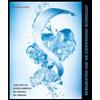 Refrigeration and Air Conditioning Technology (Mi...Mechanical EngineeringISBN:9781305578296Author:John Tomczyk, Eugene Silberstein, Bill Whitman, Bill JohnsonPublisher:Cengage Learning
Refrigeration and Air Conditioning Technology (Mi...Mechanical EngineeringISBN:9781305578296Author:John Tomczyk, Eugene Silberstein, Bill Whitman, Bill JohnsonPublisher:Cengage Learning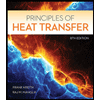 Principles of Heat Transfer (Activate Learning wi...Mechanical EngineeringISBN:9781305387102Author:Kreith, Frank; Manglik, Raj M.Publisher:Cengage Learning
Principles of Heat Transfer (Activate Learning wi...Mechanical EngineeringISBN:9781305387102Author:Kreith, Frank; Manglik, Raj M.Publisher:Cengage Learning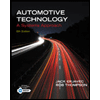 Automotive Technology: A Systems Approach (MindTa...Mechanical EngineeringISBN:9781133612315Author:Jack Erjavec, Rob ThompsonPublisher:Cengage Learning
Automotive Technology: A Systems Approach (MindTa...Mechanical EngineeringISBN:9781133612315Author:Jack Erjavec, Rob ThompsonPublisher:Cengage Learning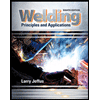 Welding: Principles and Applications (MindTap Cou...Mechanical EngineeringISBN:9781305494695Author:Larry JeffusPublisher:Cengage Learning
Welding: Principles and Applications (MindTap Cou...Mechanical EngineeringISBN:9781305494695Author:Larry JeffusPublisher:Cengage Learning

Refrigeration and Air Conditioning Technology (Mi...
Mechanical Engineering
ISBN:9781305578296
Author:John Tomczyk, Eugene Silberstein, Bill Whitman, Bill Johnson
Publisher:Cengage Learning

Principles of Heat Transfer (Activate Learning wi...
Mechanical Engineering
ISBN:9781305387102
Author:Kreith, Frank; Manglik, Raj M.
Publisher:Cengage Learning

Automotive Technology: A Systems Approach (MindTa...
Mechanical Engineering
ISBN:9781133612315
Author:Jack Erjavec, Rob Thompson
Publisher:Cengage Learning

Welding: Principles and Applications (MindTap Cou...
Mechanical Engineering
ISBN:9781305494695
Author:Larry Jeffus
Publisher:Cengage Learning
Thermodynamic Availability, What is?; Author: MechanicaLEi;https://www.youtube.com/watch?v=-04oxjgS99w;License: Standard Youtube License